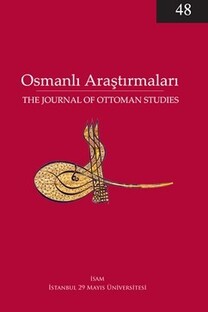Elif Akçetin and Suraiya Faroqhi (eds.), Living the Good Life: Consumption in the Qing and Ottoman Empires of the Eighteenth Century,
The prolific Ottoman historian Suraiya Faroqhi co-edited with Elif Akçetin a new volume on material consumption in the Qing and the Ottoman worlds in the eighteenth century. Several writers in this highly diverse volume look into the social and economic relations between the Ottoman and the Qing empires. After the introduction, the first chapter, “Setting the Stage” (p. 38-58), opens the discussion on material culture with references to new approaches by the editors. Chapter I presents consumption patterns in the Qing and the Ottoman empires by analyzing land use, population, trade effects, urban life and food culture. The Ottoman elite and their possessions receive special attention in that part. This chapter indicates that the essays on the Qings and the Ottomans group around a set of themes. Akçetin claims that similar to the relation between the Nile and the Egyptian civilization, the Qing Empire relied on the great opportunities offered by such great rivers as the Yangzi and the Yellow to boost commerce and consumption during the 1700s. On the Ottoman side, estate inventories of deceased persons and other registers, especially these of local qadis are major sources for the history of Ottoman material culture through the eighteenth century. The new interest in consumption and material culture in the Qing and the Ottoman empires rely on these sources primarily.
Anahtar Kelimeler:
Living, , Consumption, , Ottoman,
Living the Good Life: Consumption in the Qing and Ottoman Empires of the Eighteenth Century
The prolific Ottoman historian Suraiya Faroqhi co-edited with Elif Akçetin a new volume on material consumption in the Qing and the Ottoman worlds in the eighteenth century. Several writers in this highly diverse volume look into the social and economic relations between the Ottoman and the Qing empires. After the introduction, the first chapter, “Setting the Stage” (p. 38-58), opens the discussion on material culture with references to new approaches by the editors. Chapter I presents consumption patterns in the Qing and the Ottoman empires by analyzing land use, population, trade effects, urban life and food culture. The Ottoman elite and their possessions receive special attention in that part. This chapter indicates that the essays on the Qings and the Ottomans group around a set of themes. Akçetin claims that similar to the relation between the Nile and the Egyptian civilization, the Qing Empire relied on the great opportunities offered by such great rivers as the Yangzi and the Yellow to boost commerce and consumption during the 1700s. On the Ottoman side, estate inventoriesof deceased persons and other registers, especially these of local qadis are major sources for the history of Ottoman material culture through the eighteenth century. The new interest in consumption and material culture in the Qing and the Ottoman empires rely on these sources primarily.
Keywords:
Living, Consumption, Qing,
- ISSN: 0255-0636
- Yayın Aralığı: Yılda 3 Sayı
- Başlangıç: 1980
- Yayıncı: TDV İslâm Araştırmaları Merkezi
Sayıdaki Diğer Makaleler
Murat R. Şiviloğlu, The Emergence of Public Opinion: State and Society in the Late Ottoman Empire
‘Üzerime bir kubbe ve âsâr binâlar etmen’ : Osmanlı Mimarlığında Açık Türbe Modası (1661-1763)
İmparatorluktan Ulus Devlete Göçler
Laramanlar: Gizli Hristiyan Arnavutların Mihaliç’e Sürgünü (1846-1848)
